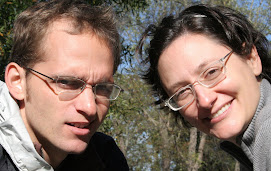I am something of a tea snob at home. I like loose tea – my favorite is single-estate Assam tea, TGFOP, which I take strong, with milk. (Shameless plug: if you’re curious, check out Hajua Assam Tea at www.SpecialTeas.com, along with the rest of their fabulous inventory. You name it, they’ve got it. And they ship quickly, too!) I haven’t found any Assam tea here, but Bangladesh is home to several large tea gardens of its own, and although they export their best stuff, the tea they sell in bags (the Bangladeshi version of Lipton’s) is excellent. When you buy it on the street at one of the myriad tea stalls, it’s fixed with a healthy dose of sweetened condensed milk and a couple spoonfuls of sugar for good measure. (All this in a demitasse the size of an espresso cup.) Generally sweetened tea makes my teeth hurt and my head ache, so I avoid the sugar if I can.
But there’s one exception: masala cha, or what we know as chai in the US – served sweet, with plenty of milk. The “masala” (pronounced here kind of like “moshla”) means “spiced”, and despite what Starbucks has led us to believe, chai does not really come out of a box. In fact, it’s much better if you make it at home, the ‘real’ way – which is what Ben and I decided to do recently. We thought we’d share our recipe and let you figure out how to improve upon it.
 We took a trip into the bazaar at Gulshan to purchase our spices – we visited one of the dry goods vendors who’s come to recognize me. The place is called Iqbal’s Store, and the guy who runs it has been working in the same place for 24 years. I’m getting to know the vendors pretty well – did some recording there the other day, as a matter of fact, and got to watch them in action. Their store is the most popular one around, if traffic is any indicator. But anyway. We bought all our spices from them; they helped us sort out what we needed and gave us little vocab lessons along the way. We picked up a bunch of cloves, whole black peppercorns, stick cinnamon, ginger, bay leaves and cardamom pods (the total cost came to 76 taka – just over a buck, for spices of much better quality than you’d usually get in the US, and in much larger quantities... and all cleverly wrapped in recycled paper and magazine pages!), took them home to our little 2-burner propane stove and brewed up a very overspiced pot of tea. We toned down the cloves and peppercorns quite a bit and tried some different proportions. The magic numbers for an acceptable 3-4 person pot of tea turned out to be in the 4 or 5 range. But try them out and mess with them, and once you’ve got it mastered, let us know…
We took a trip into the bazaar at Gulshan to purchase our spices – we visited one of the dry goods vendors who’s come to recognize me. The place is called Iqbal’s Store, and the guy who runs it has been working in the same place for 24 years. I’m getting to know the vendors pretty well – did some recording there the other day, as a matter of fact, and got to watch them in action. Their store is the most popular one around, if traffic is any indicator. But anyway. We bought all our spices from them; they helped us sort out what we needed and gave us little vocab lessons along the way. We picked up a bunch of cloves, whole black peppercorns, stick cinnamon, ginger, bay leaves and cardamom pods (the total cost came to 76 taka – just over a buck, for spices of much better quality than you’d usually get in the US, and in much larger quantities... and all cleverly wrapped in recycled paper and magazine pages!), took them home to our little 2-burner propane stove and brewed up a very overspiced pot of tea. We toned down the cloves and peppercorns quite a bit and tried some different proportions. The magic numbers for an acceptable 3-4 person pot of tea turned out to be in the 4 or 5 range. But try them out and mess with them, and once you’ve got it mastered, let us know… Boil together in a pot with plenty of (potable) water:
Boil together in a pot with plenty of (potable) water:4-5 whole cloves
4-5 whole black peppercorns
4-5 whole cardamom pods
1 bay leaf
thinly sliced fresh ginger (start with – you guessed it - 4 or 5 paper-thin slices; more to your liking)
lots of stick cinnamon (at least one whole stick; more to your liking)
After a few minutes of moderate boiling, you can go ahead and add tea – loose (e.g. English breakfast) or bag tea (yes, even Lipton’s!) both work; you’ll have to strain the tea either way. I'd recommend using at least 3 bags or three healthy teaspoons of loose tea for a 3-4 person pot – the milk will weaken the brew. Once it’s brewed strong enough for your liking, lower the heat and add milk (not skim!) – about ½ the quantity of water seems to work well. Get the whole mixture nice and hot, strain it, and serve immediately. You can either pre-sweeten while it’s still over the heat, or serve unsweetened and pass around the sugar bowl. Yumminess!












